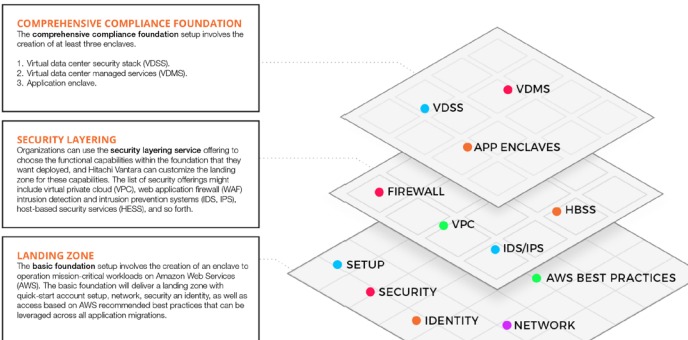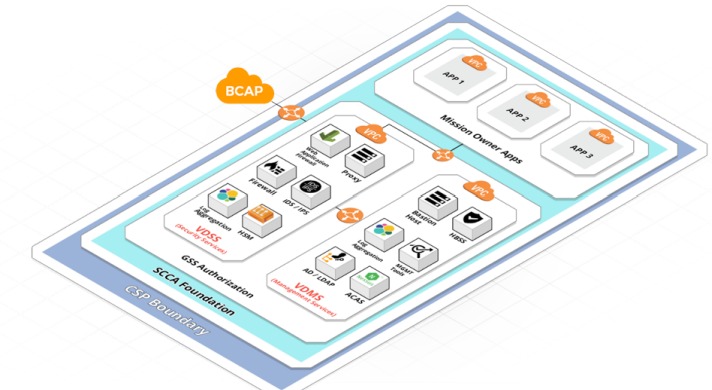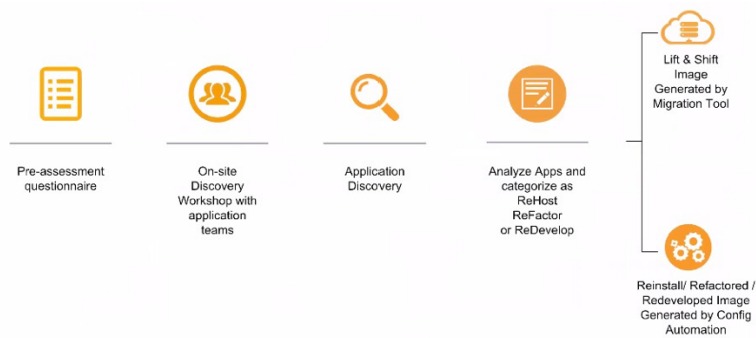Enterprises everywhere are moving to the cloud to reap the financial, operational and technical benefits. However, their cloud objectives may range from reducing operational costs, increasing agility and improving productivity, to powering back-end engines with artificial intelligence (AI) and machine learning, or fostering a culture of innovation. To extract value from these cloud initiatives, it is imperative that organizations ensure their cloud projects are well structured and tied to specific results or outcomes. We consider three phases to be vital to a successful cloud migration, as shown in Figure 1.

Determining where you stand ahead of a migration allows you to launch with sturdy footing. Understand what constitutes your existing IT infrastructure, and determine the gaps that need to be resolved to create secure, reusable landing zones, or templates and automation rules.
In addition to an audit, it is important to gain a good understanding of the technical challenges that may arise throughout the migration. Common technical challenges that a solid cloud foundation should address are shown in Figure 2.

Cloud Migration Services from Hitachi Digital Services have delivered end-to-end cloud strategies. We have architected and implemented solid cloud foundations for a number of large enterprise customers across a variety of federal government agencies and other highly regulated industries. These engagements have helped these organizations to smoothly migrate to the cloud to overcome key challenges and realize more predictable cost structures, better use of modern technologies, greater innovation and increased productivity.
In our migration work we have developed three layers to consider when developing a cloud migration, as shown in Figure 3.

Figure 3.Considerations for Creating a Successful Migration Foundation
We recommend that every migration use the Secure Cloud Computing Architecture (SCCA) published by the Defense Information Systems Agency (DISA) as a benchmark reference (see Figure 4). This framework covers all aspects of a public cloud implementation and helps prioritize security concerns inherent in today’s infrastructure-as-a-service (IaaS), platform-as-a-service (PaaS) and software-as-a-service (SaaS) industry offerings.

To ensure a smooth migration, enterprises must consider application development life cycles, business relevance, security impacts, organizational roles, financial aspects of cloud service delivery, and other operational variables.
Bearing these in mind, organizations can create a detailed migration plan for each application to understand how best to factor it into the potential architecture and application road map. By developing discovery and dependency maps, you can decide whether the application is ready to migrate to the cloud. At the same time, you can also determine the application’s disposition to minimize errors in future stages of the migration.
Synchronizing migration timelines with the DevOps life cycle maximizes efficiency and streamlines key processes. With this in mind, we offer best practice methodologies for DevOps migration, as shown in Figure 5.

Figure 5.Best Practice DevOps-Based Migration Methodologies
Protecting data in transit to the cloud from on-premises environments is key to migration success. Successful deployments utilize a data security framework that leverages industry best practices and robust security technology to ensure customer data is safeguarded throughout the process. Here are a few best practices to use when creating this blueprint:
Post Migration Business Continuity, Operations and Compliance
Executing a successful move to the cloud requires a number of post-migration considerations and solutions. It is a common mistake to replicate on-premises deployment practices in cloud environments. To see the full benefits of the cloud, use processes and solutions designed for the cloud.
For example, cloud deployments inherently meet the disaster recovery (DR) requirements for recovery point objective (RPO) and recovery time objective (RTO). They also deliver latency- or geolocation-based routing and auto scaling to support high availability (HA) and demand bursts, which is different than on-premises peak capacity processes. Replicating on-premises peak capacity deployments could result in costly solutions that are not appropriately “adapted” for the cloud.
It is a best practice to implement a tiered approach to HA and DR workloads based on RPO and RTO requirements.
leverages multi-AZ (availability zone) architectures that deploy applications in a highly available fashion across fault-isolated availability zones within a single AWS region. This approach meets DR and business continuity requirements.
introduces architectures that include a second AWS region actively (application nodes actively running in the second AWS region) or passively (application nodes instantiated only during a disaster scenario) when RTOs require minimal downtime.
Regardless of how you choose to manage your environment, automating tasks, such as those listed above, is a key factor for ongoing success.
How can you best monitor your cost optimization, security or other operational goals? Regularly collect information from your cloud instances and feed them into a data lake where data is aggregated and correlated into a central operations dashboard with an overview of the customer environment.
Ensuring constant compliance with industry regulations is also critical to continued cloud management and operations. By setting up vulnerability scanning and remediation, security technical implementation guides (STIGs), validation and implementation, and compliance management dashboards, you can help streamline and better manage compliance.

Regardless of how you choose to manage your environment, automating tasks, such as those listed above, is a key factor for ongoing success.
How can you best monitor your cost optimization, security or other operational goals? Regularly collect information from your cloud instances and feed them into a data lake where data is aggregated and correlated into a central operations dashboard with an overview of the customer environment.
Ensuring constant compliance with industry regulations is also critical to continued cloud management and operations. By setting up vulnerability scanning and remediation, security technical implementation guides (STIGs), validation and implementation, and compliance management dashboards, you can help streamline and better manage compliance.
Hitachi Digital Services is a Global System Integrator and Premier Consulting Partner in the Amazon Web Services Partner Network (APN), and a Microsoft Silver Cloud Partner. The company assists organizations with setting up and managing secure cloud environments, migrating critical workloads, and ultimately establishing the proper framework for ongoing operations. Our expertise is illustrated by a long and growing roster of cloud competencies earned from our experience serving various industries and for our technical proficiency. We’ve leveraged our proven, secure and stress-free methodology to successfully implement complex, scalable architectures in the cloud for hundreds of businesses.
We provide a unique approach to migrating and managing workloads in the cloud. This model focuses on delivering business outcomes for customers. We start all engagements by collaborating with our customer to define the outcomes to be delivered and then we commit to delivering these outcomes. Our customers have found this to be a significant advantage over time and material delivery models where the focus is on hours spent rather than results achieved.
Cloud Migration Services from Hitachi Digital Services have delivered end-to-end cloud strategies and architected and implemented solid cloud foundations for a number of large enterprise customers across a variety of regulated industries. These engagements have helped organizations overcome key challenges and realize more predictable cost structures, better use of modern technologies, greater innovation and increased productivity. The U.S. Transportation Command, SAP NS2, American Heart Association, Ditech and Radian Mortgage started their cloud journeys early on and have completely transformed their organizations by putting the right foundations in place.
Cloud Migration Services from Hitachi Digital Services bring together all of the components companies need to launch a successful cloud migration. Created to deliver secure, agile and reliable cloud services, this offering helps to facilitate the consistent creation of infrastructure and application builds. Cloud Migration Services from Hitachi Digital Services significantly reduce the time needed for cloud migration from weeks to days so that companies can realize the benefits of their cloud deployments faster.
Hitachi Digital Services delivers a stable, secure and comprehensive platform for optimizing cloud workloads, as shown in Figure 6.

About Cloud Migration Services from Hitachi Digital Services, visit hitachids.com or contact your Hitachi Digital Services representative.
By subscribing to Hitachi Digital Services’ Insights and providing your e-mail, you agree and consent to Hitachi Digital Services´ Privacy Policy and Website Terms of Use. Data Controller: Hitachi Digital Services Corporation. Purpose: manage Hitachi Digital Services.
Read More +
